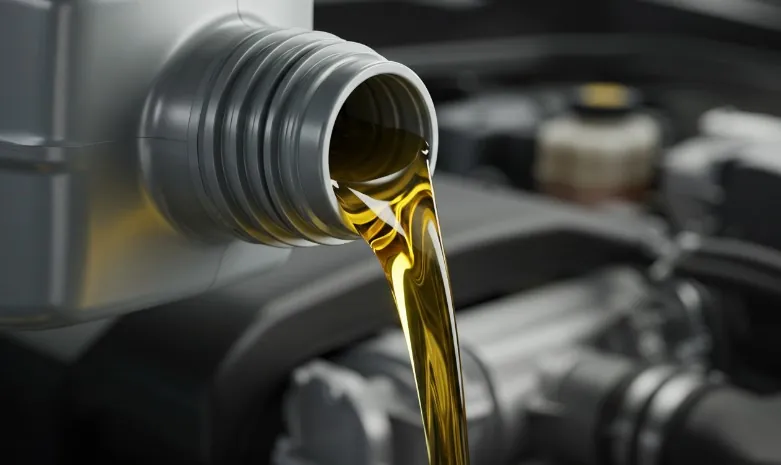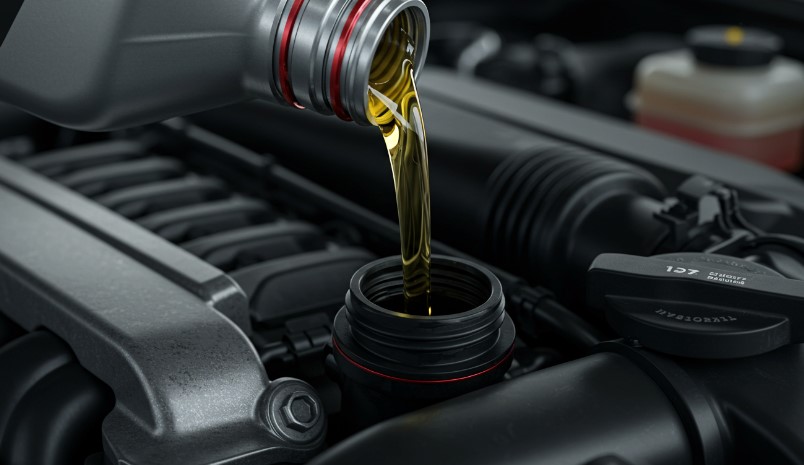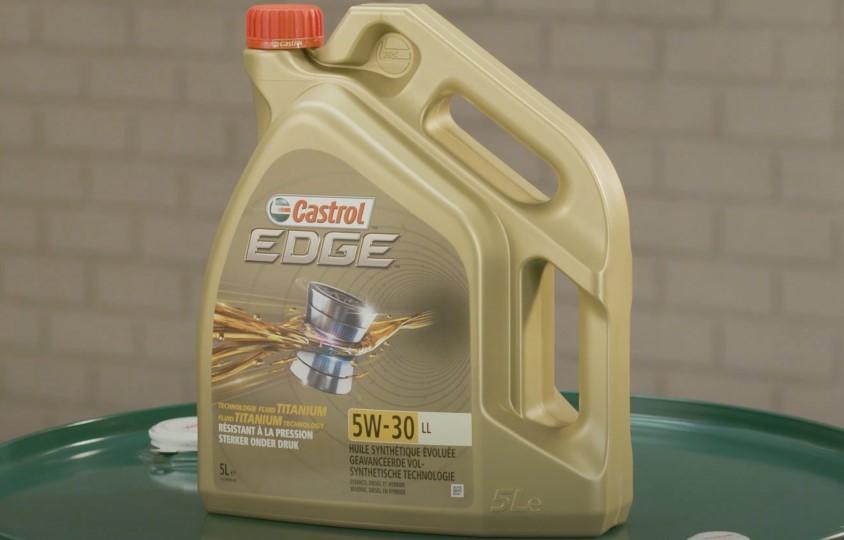
Share Post:
If you’ve popped the hood lately and found yourself staring down two bottles of oil—one marked 5W30, the other 0W20, you’re not alone. A lot of drivers, especially those who do their own oil changes, wonder if they can just grab what’s handy or cheaper at the store.
On the surface, the difference seems small. But under the hood, it can matter more than you might think, especially depending on your engine, where you live, and how you drive.
Let’s get into it.
Table of Contents
ToggleKey Highlights
- 0W20 flows better in cold weather and improves fuel economy.
- 5W30 gives you thicker protection at higher temps.
- Always check your owner’s manual before changing oil grades.
- Synthetic oil is worth the extra cost.
- If you’re ever unsure, talk to a mechanic who knows your make and model.
Viscosity 101 & What Those Numbers on the Bottle Really Mean

Oil viscosity is just a fancy word for thickness, or how the oil flows at different temperatures. And those numbers you see on every bottle? They’re standardized by the Society of Automotive Engineers (SAE).
Here’s the breakdown:
- The first number (0W or 5W) tells you how the oil performs in cold weather. Lower numbers = thinner oil = faster flow when it’s cold outside. That “W” stands for “winter.”
- The second number (20 or 30) indicates how the oil behaves when the engine’s hot—typically around 100°C (212°F). A higher number means the oil stays thicker at those high temps.
So in simple terms:
| Oil Type | Cold Weather Flow | Hot Engine Protection |
| 0W20 | Excellent (very thin) | Thinner at temp (less drag) |
| 5W30 | Good (slightly thicker) | Thicker at temp (more cushion) |
0W20 vs. 5W30 – Key Differences
Let’s make it easy to compare.
| Feature | 0W20 | 5W30 |
| Cold Start Performance | Top-tier (great for harsh winters) | Still solid, but not ideal for extreme cold |
| Fuel Efficiency | Higher, due to lower friction | Slightly lower due to thicker flow |
| High-Temp Protection | Designed for efficiency | Offers more robust protection under stress |
| Best For | Newer engines, cold climates | Older engines, hot climates, high mileage |
| Market Use | Standard in many modern vehicles | Very common and widely used |
So Can You Actually Use 5W30 Instead of 0W20?

Short answer: Sometimes, but not always. Let’s look at the key factors before you decide.
1. Check the Manual First. No Exceptions.
Before anything else, grab your owner’s manual. Some vehicles explicitly allow 5W30 as an alternative. Others are very strict about sticking to 0W20.
- Example: A 2012 Toyota Highlander owner found their manual listed both 0W20 and 5W30—depending on the region. In the U.S., 0W20 is preferred, but in places like Australia, 5W30 shows up in the same engine spec.
- If the manual doesn’t mention 5W30 at all, assume it’s not approved. Using an oil outside spec might raise issues—especially if the vehicle is still under warranty.
2. Consider Your Climate
Oil thickens in the cold and thins out in the heat. That makes climate a big player in this decision.
- If you live in a cold region (Minnesota winters, anyone?), stick with 0W20. It flows faster when you start your car on a freezing morning, which reduces metal-on-metal wear.
- In warmer places, like central Texas or southern California, the difference isn’t as critical. 5W30 can still do the job, and in some cases—like older engines—it might actually help.
3. Think About Your Engine’s Age and Condition
Engines change as they rack up the miles.
- Newer vehicles are built with super-tight tolerances. Thinner oil like 0W20 is part of how they stay efficient and responsive.
- High-mileage engines might benefit from a thicker oil like 5W30, which forms a more protective film—especially if the engine is starting to burn a little oil or run hot.
So if you’re driving a well-worn SUV or an older pickup, 5W30 might give you a bit more protection.
4. Emergency Use Is OK, Just Don’t Make It a Habit
Let’s say your oil light is on, and all you have access to is 5W30. Use it. Low oil pressure is much worse than using the “wrong” viscosity for a short while.
But swap back to 0W20 at your next oil change. Your engine is designed for it, and in the long run, that’s what will keep things humming.
Are There Risks to Using 5W30 in a 0W20 Engine?
Yes, but they’re usually long-term. Let’s walk through what you might be signing up for.
Increased Wear During Cold Starts
5W30 takes longer to reach the engine’s tight spots on a cold morning. Even a few seconds of delayed lubrication can wear down components over time.
Lower MPG
Thicker oil means more drag. It’s not massive—maybe 1-3 MPG difference—but if you’re tracking fuel economy, it’ll show up.
Possible Warranty Issues
If your car’s still covered and something goes wrong, expect questions. If the manufacturer sees you’ve been using 5W30 in a 0W20-only engine, that could be a problem.
Potential Overheating in High-Stress Engines
5W30 is still light enough for most engines, but if you go much thicker than recommended (like 10W30 or 20W50), the oil might not shed heat as well. That can lead to higher operating temps and faster wear.
What About Synthetic vs. Conventional Oil?

Here’s the deal – go synthetic if you can. Both 0W20 and 5W30 are widely available as synthetic oils, and the benefits are real:
- Longer life: Synthetic oil holds up better, meaning fewer breakdowns between changes.
- Cleaner engine: Less gunk and sludge buildup.
- Better across temperatures: Synthetic oils are more stable—thinner when cold, thicker when hot.
If you’re using 5W30 temporarily in a 0W20 engine, using a synthetic 5W30 helps reduce some of the risk.
When It Might Make Sense to Use 5W30
You might consider switching—either permanently or occasionally—if:
- Your vehicle is high-mileage (100,000+ miles).
- You live in a hot climate where cold starts aren’t a concern.
- You drive under high-stress conditions (towing, long commutes, stop-and-go traffic).
- Your engine burns oil, and you want a slightly thicker cushion.
Just make sure your manual doesn’t explicitly restrict the change.
What You Should Actually Do
Here’s your quick checklist before switching oils:
- Look at your manual – Does it mention 5W30 anywhere?
- Think about where you live – Below-freezing mornings? Stick with 0W20.
- Is your car aging? – 5W30 may be better for high-mileage protection.
- Synthetic only – Don’t mess with conventional blends unless you’re doing short intervals.
- Watch for signs – If you switch to 5W30, pay attention. Any knocking, sluggishness, or weird heat? Go back.
Final Thoughts
Swapping 0W20 for 5W30 isn’t engine murder—but it’s not something to take lightly either. It depends on your climate, your vehicle’s design, and what the manufacturer says.
In a pinch, yes, you can use 5W30 without panic. But for long-term engine health, it’s always best to follow the oil specs your car was built for.
Think of oil as more than just “fluid”—it’s a core part of how your engine breathes, cools, and stays alive. Get it right, and your car will repay you with miles of smooth driving.
Related Posts:








